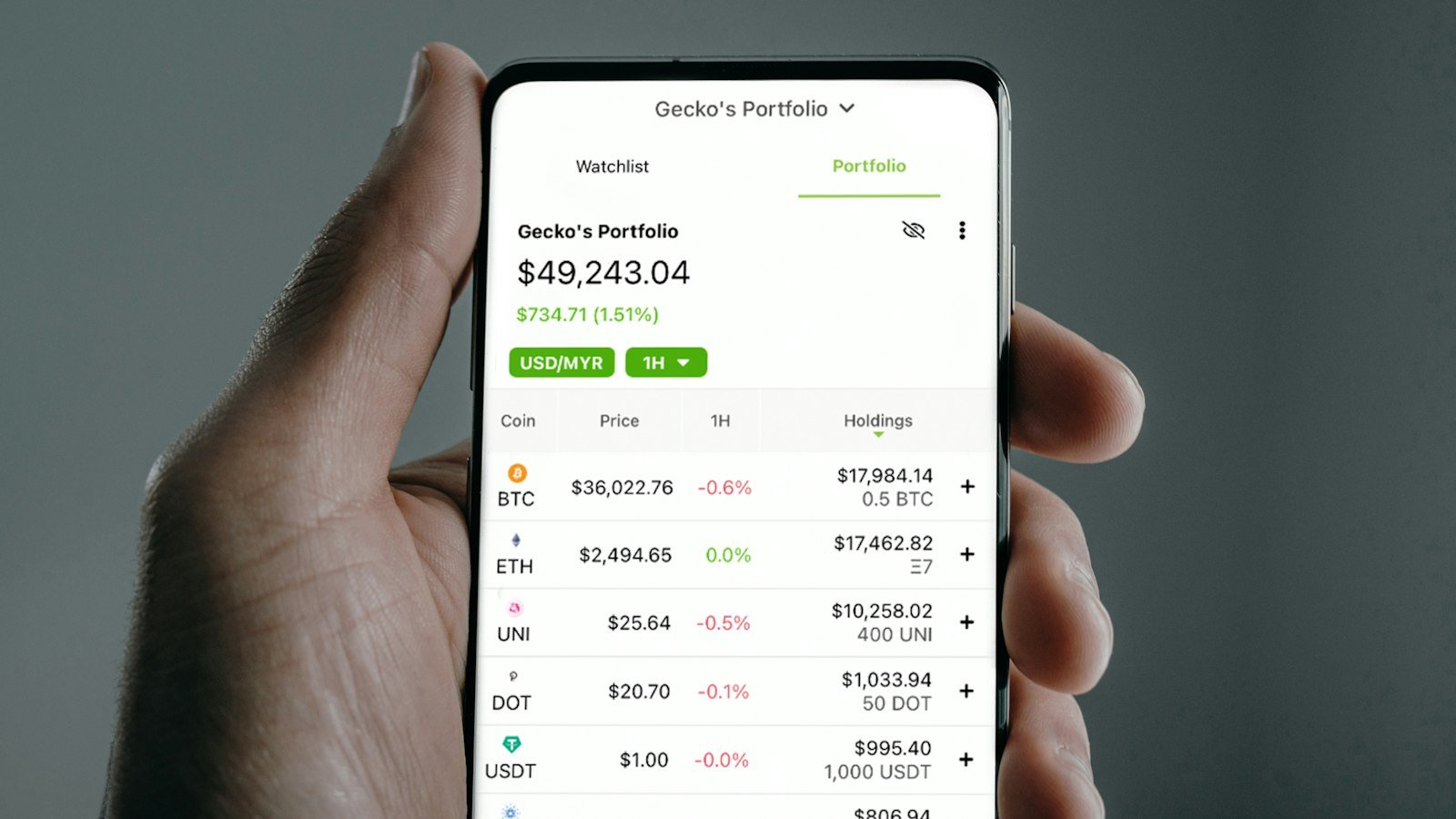In a world where time is of the essence, a revolution is underway that promises to transform the eCommerce landscape as we know it. Buckle up, dear readers, for a thrilling journey into the need for speed, pushing the boundaries of possibility and unleashing the power of instantaneous gratification. It is in the realm of eCommerce conversion rates that we witness a battle of wits – a battle where milliseconds make all the difference. Today, we embark on a quest to unveil the secrets behind the revolution that propels eCommerce into new dimensions of success. Set aside your preconceived notions, for we are about to explore the art of captivating consumers at dizzying speeds. Welcome to a world where swift transactions lead to mind-blowing conversion rates and where the need for speed reigns supreme. Prepare to be awestruck as we delve into the depths of revolutionizing eCommerce conversion rates.
Table of Contents
- :
- 1. Optimizing Page Load Speed: A Key Driver for eCommerce Success
- 2. Streamlining Checkout Process: Accelerating Conversions and Reducing Cart Abandonment
- 3. Mobile Commerce: Unlocking the Power of Speed for Increased Sales
- 4. Leveraging Accelerated Mobile Pages (AMP): Enhancing Speed and User Experience
- Q&A
- In Conclusion

:
In the fast-paced world of eCommerce, one crucial factor can make or break a business’s success: speed. From the moment a customer lands on a website to the final checkout process, every second counts. Slow loading pages, lengthy checkout processes, and delayed response times can be a major turnoff for potential buyers, leading to high bounce rates and low conversion rates. To truly revolutionize eCommerce conversion rates, businesses must prioritize speed and optimize their websites for lightning-fast performance.
So, why is speed so essential in boosting conversion rates? Let’s dive into a few reasons:
1. Improved User Experience: Website visitors have short attention spans and expect instant gratification. Slow-loading pages frustrate users, causing them to abandon their shopping carts and seek alternatives elsewhere. By providing a smooth and speedy browsing experience, businesses can keep customers engaged, reducing bounce rates and increasing the chances of conversion.
2. Mobile Optimization: With the rise of smartphone usage, mobile optimization plays a significant role in eCommerce success. A mobile-friendly website that loads quickly on various devices ensures a seamless shopping experience, enhancing the chances of conversions. According to research, a one-second delay in mobile site load times can impact conversion rates by up to 20%.
To achieve lightning-fast eCommerce websites, businesses can implement various strategies such as leveraging caching techniques, optimizing images, minifying CSS and JavaScript files, and employing a content delivery network (CDN) to distribute content efficiently. Speed revolutionizes eCommerce conversion rates by creating a user-friendly environment that maximizes revenue potential and improves customer satisfaction. So, don’t underestimate the power of speed – embrace it and witness the transformative impact it can have on your business’s success in the online marketplace!
1. Optimizing Page Load Speed: A Key Driver for eCommerce Success
In today’s fast-paced digital world, the success of an eCommerce business hinges on the ability to deliver a lightning-fast user experience. Page load speed is not just a small detail, it is a key driver for eCommerce success. Why is it so important, you ask? Well, let’s dive in and uncover the reasons why optimizing page load speed can revolutionize your eCommerce conversion rates:
1. Boost customer satisfaction: When you visit an online store and the pages take ages to load, frustration builds up, leading to a negative user experience. Slow load times can result in potential customers abandoning their shopping carts and seeking faster alternatives. By optimizing your page load speed, you can create a seamless and enjoyable browsing experience, ensuring that visitors stay engaged and more likely to make a purchase.
2. Improve search engine rankings: Did you know that page speed is a crucial factor considered by search engines when determining how high to rank your website in search results? Yes, it’s true! Search engines like Google believe that fast-loading pages provide a better user experience, so they prioritize websites with speedy load times. By working on your page load speed, you can improve your search engine rankings, which can dramatically increase organic traffic and ultimately boost conversions.
To optimize your page load speed, you can implement various strategies such as compressing images, minifying CSS and JavaScript files, leveraging browser caching, and using Content Delivery Networks (CDNs) to deliver content from servers located closer to your users – just to name a few. Remember, in the world of eCommerce, every second counts. So, don’t underestimate the power of optimizing your page load speed to revolutionize your conversion rates and propel your eCommerce business towards success.
2. Streamlining Checkout Process: Accelerating Conversions and Reducing Cart Abandonment
In today’s fast-paced digital world, speed is everything. When it comes to eCommerce, the checkout process can make or break a sale. Customers are constantly seeking convenience and efficiency, and a slow, complicated checkout can quickly lead to frustration and cart abandonment. This is where streamlining the checkout process becomes crucial for businesses looking to boost their conversion rates and reduce cart abandonment.
So how can you revolutionize your eCommerce conversion rates? By implementing a streamlined checkout process that allows customers to quickly and easily complete their purchase. Here are a few tips to get you started:
– Simplify the form: An overly complex and lengthy checkout form can deter customers from completing their purchase. Keep it simple by only asking for essential information such as name, email, and shipping address. Consider using auto-fill fields to further speed up the process.
– Optimize for mobile: With the majority of online shoppers making purchases on their mobile devices, it’s essential to ensure your checkout process is mobile-friendly. Use responsive design to create a seamless and intuitive experience for mobile users.
– Offer guest checkout: Not everyone wants to create an account before making a purchase. Offering a guest checkout option allows customers to bypass the registration process, reducing friction and saving them time.
– Provide multiple payment options: Different customers have different preferences when it comes to payment. By offering a variety of payment options, such as credit cards, PayPal, and digital wallets, you can accommodate a broader range of customers.
By implementing these strategies, you can significantly accelerate conversions and reduce cart abandonment rates. Remember, speed and convenience are key in today’s eCommerce landscape, and a streamlined checkout process will help you stay ahead of the competition.
3. Mobile Commerce: Unlocking the Power of Speed for Increased Sales
In today’s fast-paced world, speed plays a crucial role in the success of any business, particularly in the realm of eCommerce. With the exponential rise of mobile devices, mobile commerce has emerged as a game-changer, unlocking the power of speed to revolutionize the conversion rates of online businesses. Here, we delve into the need for speed in eCommerce and how mobile commerce has become the driving force behind increased sales.
1. Instant Gratification: With mobile commerce, customers can make purchases on the go, eliminating the need to wait until they are in front of a computer. This instant gratification not only enhances the overall customer experience but also significantly increases the chances of conversion. As businesses optimize their mobile websites for speed and usability, customers can swiftly browse through products, add them to their carts, and checkout seamlessly.
2. Quick and Easy Comparison Shopping: Mobile commerce allows customers to effortlessly compare prices, read reviews, and research product information while physically present in a store. By leveraging the power of speed, businesses can provide customers with real-time data, allowing them to make informed purchasing decisions. This convenience not only saves time for shoppers but also leads to higher conversion rates as they are more likely to complete a purchase when all the necessary information is readily available.
3. One-Click Purchasing: Speed is not just about convenience; it’s also about simplicity. Mobile commerce has paved the way for one-click purchasing, reducing friction in the buying process. By implementing features like saved payment information and streamlined checkout forms, businesses can eliminate the need for customers to input their details repeatedly, ensuring a faster and more efficient purchasing experience. This not only reduces cart abandonment rates but also encourages repeat purchases, ultimately boosting sales.
4. Push Notifications: With mobile commerce, businesses can leverage push notifications to reach customers instantly and personally. These notifications can alert customers about time-sensitive offers, personalized recommendations, or updates on their favorite products. By harnessing the power of speed through push notifications, businesses can create a sense of urgency and drive sales by notifying customers of limited-time deals or reminding them of items left in their carts.
Mobile commerce has undeniably unlocked the power of speed for increased sales in the world of eCommerce. By embracing the need for speed and optimizing their mobile platforms, businesses can enhance the overall customer experience, improve conversion rates, and ultimately drive revenue. In this ever-evolving digital landscape, prioritizing speed is essential for staying ahead of the competition and catering to the growing demands of today’s mobile-first consumers.
4. Leveraging Accelerated Mobile Pages (AMP): Enhancing Speed and User Experience
Leveraging Accelerated Mobile Pages (AMP) can have a transformative impact on the speed and user experience of an eCommerce website. With the need for speed becoming increasingly crucial in today’s digital landscape, businesses are realizing that a slow-loading website can be detrimental to their conversion rates. Here’s why incorporating AMP into your eCommerce strategy is essential:
1. Lightning-fast load times: AMP enables websites to load instantaneously, providing users with a seamless browsing experience. This is particularly important for eCommerce, where customers value speed and efficiency. By reducing page load times, you not only improve the user experience but also increase the likelihood of converting visitors into paying customers.
2. Enhanced mobile visibility: With mobile devices accounting for a significant portion of online traffic, having a mobile-friendly website is non-negotiable. AMP optimizes your web pages for mobile devices, ensuring they display correctly and load quickly on smartphones and tablets. This improved mobile experience not only boosts your search engine rankings but also attracts and retains mobile users, ultimately increasing conversion rates.
3. Streamlined design and functionality: AMP encourages a simplified and minimalist approach to web design, focusing on providing the essential elements without unnecessary bells and whistles. This simplicity not only aids in faster loading times but also enhances the overall user experience by eliminating distractions. By presenting users with a clean and intuitive interface, you can guide them seamlessly through the purchasing journey, leading to higher conversion rates.
4. Competition edge: Incorporating AMP into your eCommerce strategy sets you apart from your competitors who may not have embraced this technology. By offering a fast and user-friendly website, you attract and retain customers who value efficiency. Additionally, search engines, such as Google, prioritize AMP-enabled pages in their mobile search results, giving you a competitive advantage in terms of visibility and organic traffic.
With the speed of your website directly impacting your eCommerce conversion rates, leveraging Accelerated Mobile Pages (AMP) has become a necessity. By harnessing the power of AMP, businesses can enhance the user experience, increase mobile visibility, streamline design and functionality, and gain a competitive edge. So, don’t hesitate to embrace this revolutionary technology and unlock the full potential of your online business.
Q&A
Q: Are slow loading times a major concern for eCommerce websites?
A: Ah, the tortoise and the hare situation! In the fast-paced online world, slow loading times can be an Achilles heel for eCommerce websites. Every second counts when it comes to capturing and retaining customers, making it imperative for businesses to prioritize website speed.
Q: Why is speed so crucial for eCommerce conversion rates?
A: Picture this: you stumble upon a website that takes ages to load. Frustration takes hold, and before you know it, you’ve hit the dreaded ”back” button. This, my friend, is known as a lost opportunity. Studies show that longer page load times directly correlate with higher bounce rates, meaning potential customers abandon ship even before exploring the virtual aisles. Speed, therefore, determines whether the visitor remains engaged and becomes a converted buyer.
Q: How does slow loading time impact the bottom line?
A: In this digital age, where the attention span of internet users is shorter than a Snapchat story, every millisecond counts. When visitors face sluggish loading times, they are more likely to abandon their shopping carts, resulting in lost sales for eCommerce businesses. So, slow loading times can have a detrimental impact on the conversion rates, hurting the bottom line and leaving businesses scrambling to catch up with their faster-loading competitors.
Q: How can businesses revolutionize their eCommerce conversion rates through speed?
A: Enter the need for speed! Businesses can revolutionize their eCommerce conversion rates by focusing on optimizing their website’s loading times. From compressing images and minifying code to reducing server response times and leveraging content delivery networks, there are various tactics to enhance website speed. Embracing modern technologies like caching, AMP (Accelerated Mobile Pages), and PWA (Progressive Web Apps) can also amplify the user experience, leading to improved conversion rates.
Q: Is speed alone enough to guarantee high conversion rates?
A: While speed is a crucial factor, it’s not the only player in the game. Once visitors land on a fast-loading website, businesses need to ensure the overall user experience is seamless and user-friendly. Streamlined navigation, intuitive design, compelling visuals, persuasive copy, and a secure checkout process are equally important to encourage customers to complete their purchases. Remember, it’s the combination of speed and a positive user experience that leads to the conversion rate revolution!
Q: How can businesses measure the impact of speed on conversion rates?
A: Analytics is the key! Businesses can leverage tools like Google Analytics to gather data on various metrics such as page load times, bounce rates, conversion rates, and more. By studying these analytics, businesses can identify the correlation between speed and conversion rates, enabling them to make data-driven decisions to further optimize their eCommerce websites.
Q: What steps can businesses take to improve their website’s speed?
A: The need for speed requires businesses to roll up their sleeves and get to work! First off, conducting a website audit to identify any speed-related issues is crucial. From there, businesses can explore options like optimizing images, upgrading hosting servers, leveraging caching techniques, minimizing code size, and eliminating unnecessary third-party scripts. Additionally, partnering with skilled developers and investing in reliable web hosting providers can also contribute to a faster loading website.
Q: Are there any real-life success stories of businesses revolutionizing their conversion rates through speed?
A: Absolutely! Countless businesses have witnessed a significant boost in their conversion rates after prioritizing website speed. For instance, one eCommerce giant reduced its average page load time by a mere 0.1 second and experienced a substantial 7% increase in conversions. Another online retailer saw a whopping 24% increase in conversions after reducing their page load time from 10 seconds to just 2 seconds. These success stories highlight the undeniable impact of speed on eCommerce conversion rates.
Q: Can speed continue to revolutionize eCommerce in the future?
A: Time waits for no one, and advancement is inevitable. With technology evolving at the speed of light, faster internet connections and evolving web standards will continue to shape the eCommerce landscape. As users become more accustomed to lightning-fast experiences, the demand for speed is only expected to increase. So, the need for speed will undoubtedly persist in revolutionizing eCommerce conversion rates, urging businesses to stay ahead of the curve to capture the hearts and wallets of digital shoppers.
In Conclusion
In conclusion, as the world continues to move at a lightning-fast pace, it becomes increasingly apparent that speed is the key to revolutionizing eCommerce conversion rates. Harnessing the power of this need for speed in the online shopping experience has the potential to propel businesses to new heights, leaving sluggish competitors in the dust.
From optimizing website loading times and streamlining checkout processes to embracing technological advancements like AI-driven chatbots, the possibilities are endless. We have witnessed the transformative impact that speed can have on user satisfaction, engagement, and ultimately, conversion rates.
But let us not forget that speed alone is not the ultimate solution. While it can be a game-changer, it must be accompanied by a solid foundation of user-centric design, seamless navigation, and personalized experiences. The need for speed must be delicately balanced with the need for authenticity, trust, and exceptional customer service.
Only by embracing the fast-paced world we live in, and adopting innovative strategies to meet the ever-increasing expectations of online shoppers, can businesses truly thrive in the eCommerce landscape. The need for speed is not just a fleeting trend, but a fundamental revolution that will shape the future of commerce.
So, are you ready to join the race towards revolutionizing eCommerce conversion rates? Strap on your seatbelt and prepare for an exhilarating journey that will transform your business, driving it toward unprecedented success.
In the end, it’s not just about reaching the finish line faster; it’s about creating an unforgettable experience that keeps customers coming back for more. Remember, in this speed-driven era, those who embrace the need for speed will lead the pack, setting new records, and leaving a lasting impact on the eCommerce world.

